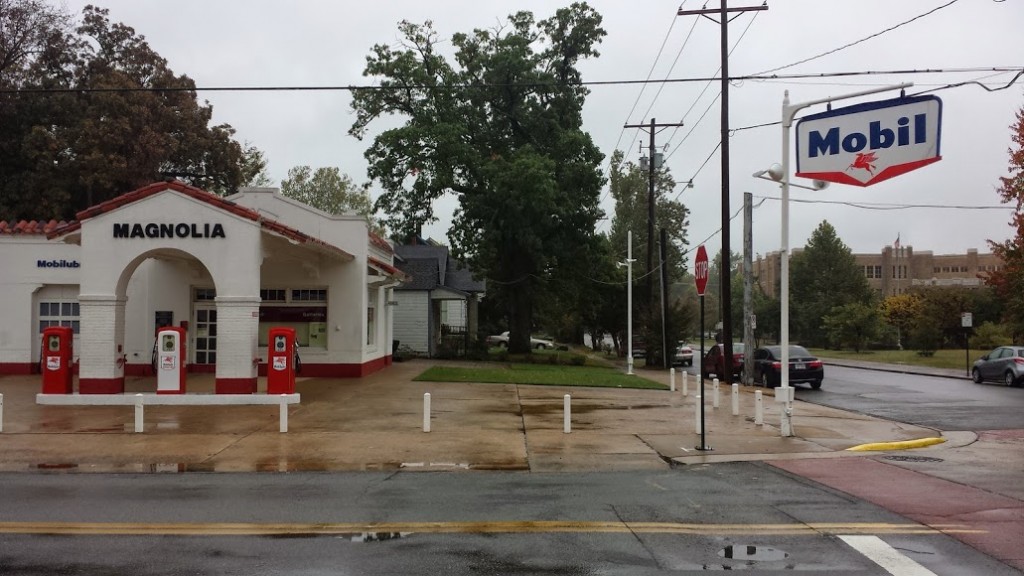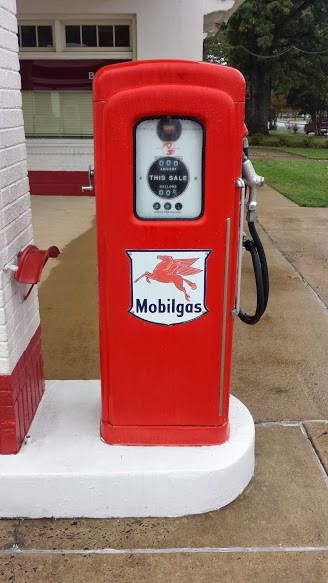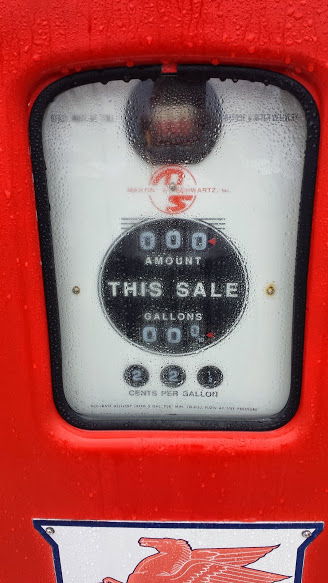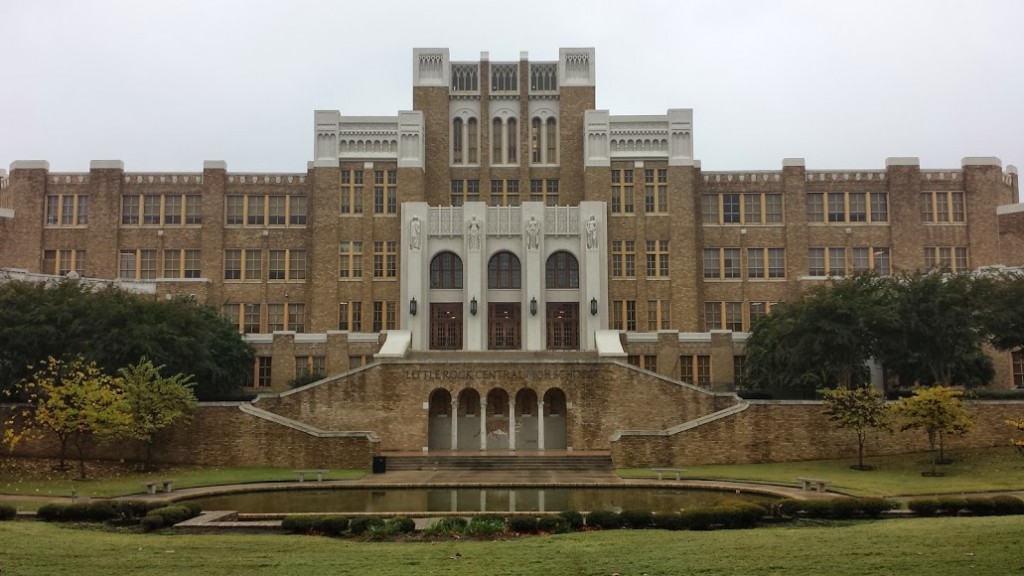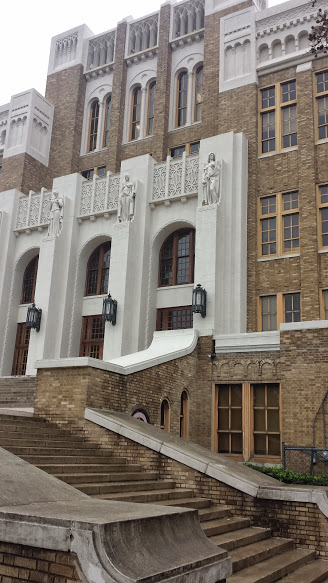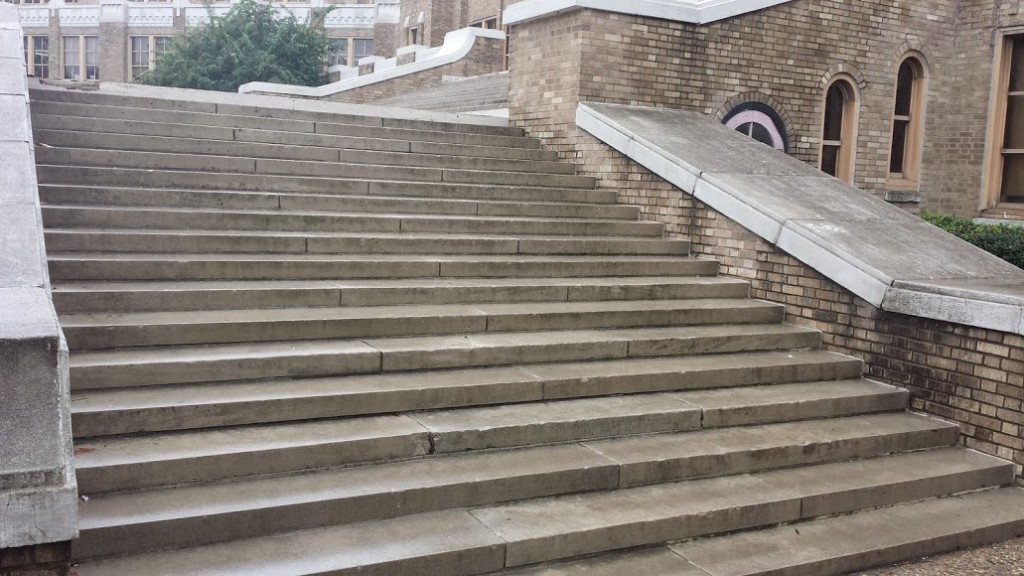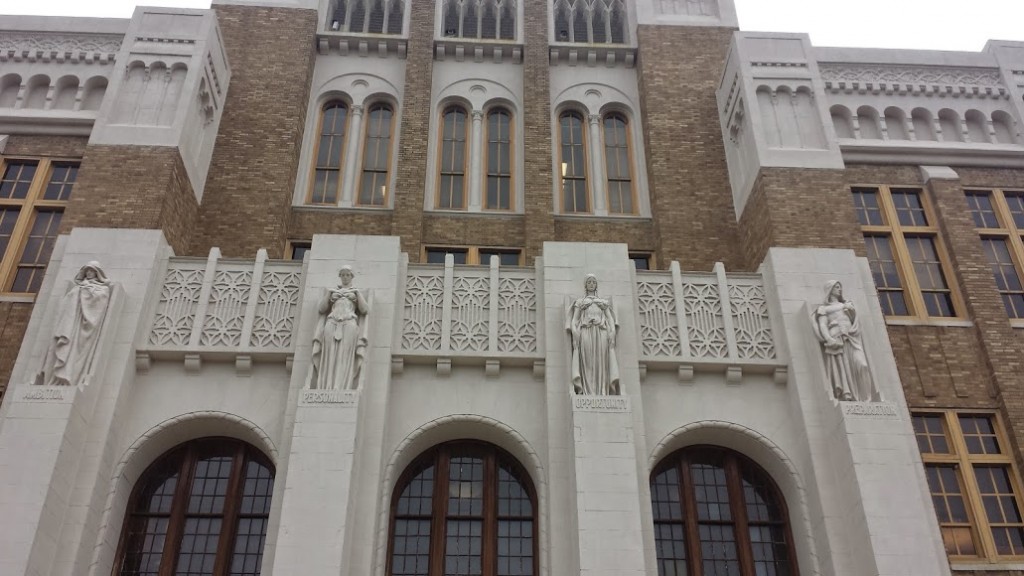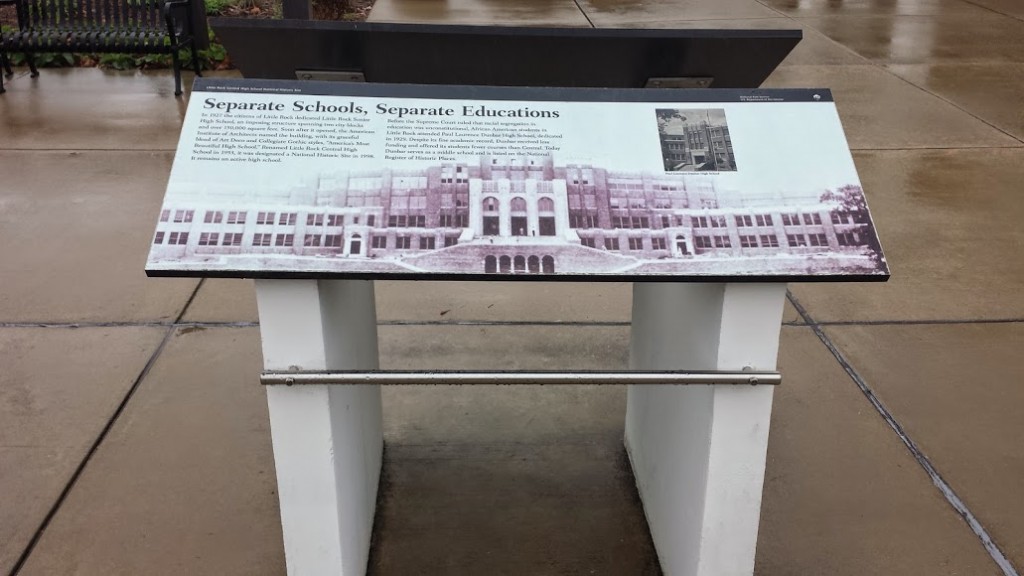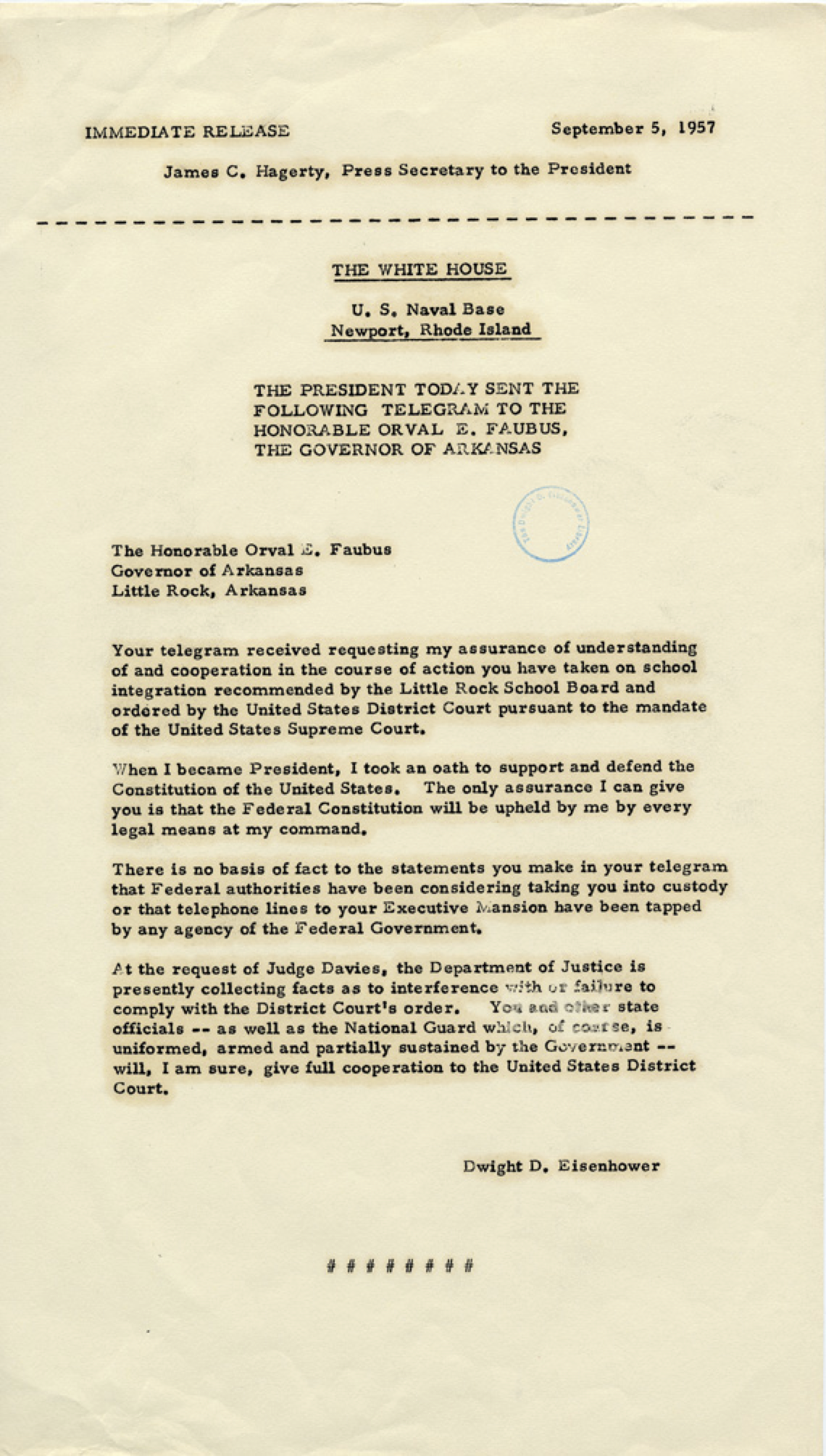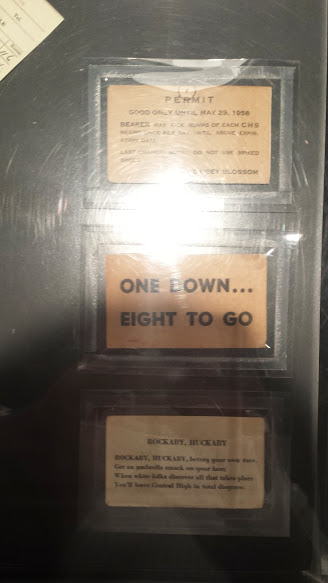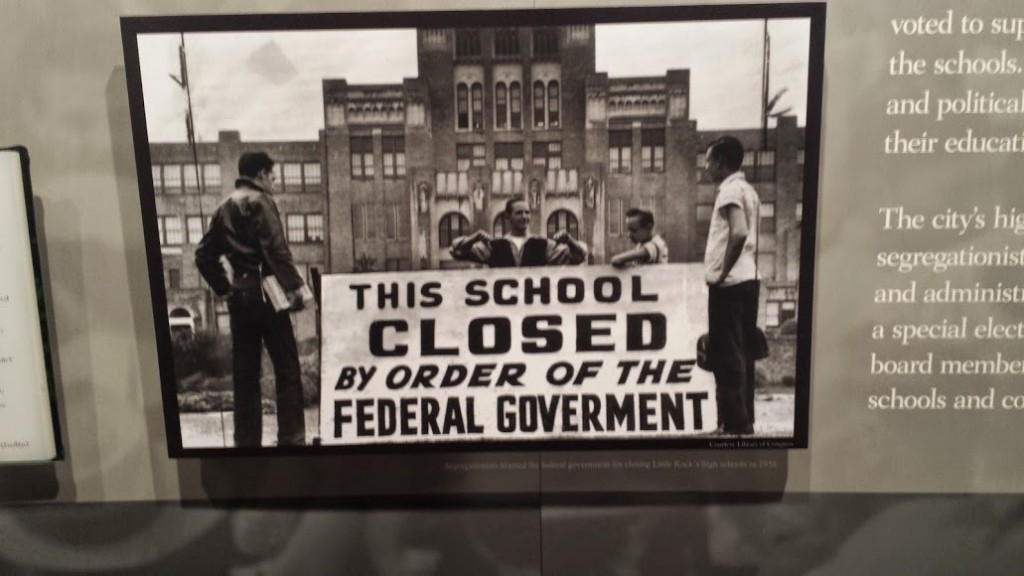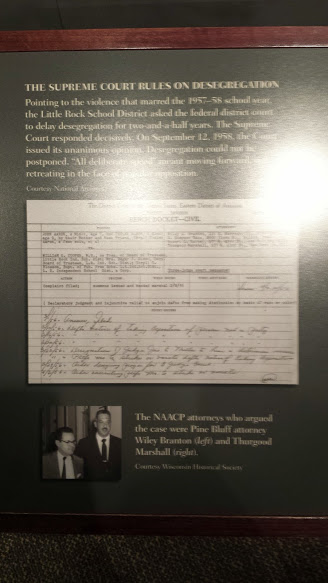On Monday, the clue for Final Jeopardy! was:
A 1957 event led to the creation of a national historic site in this city, signed into law by a president whose library is now there too.
Duh. That was easy. On Tuesday, I taught Cooper v. Aaron, which involved integration at Central High School in Little Rock, Arkansas, the home of the Clinton Presidential Library. (I’ve visited both). Remarkably, all three contestants missed it.


Central High School is still active, and is also a national park.
Across the street from the school, they refurbished a gas station to appear as it did during the 1950s. It was at this gas station that the media filed their reports.
Gas was $.22 per gallon. Adjusted for inflation, that would be about $2.50 today.
As I approached the school, and climbed those famous steps, I was overcome by a very powerful feeling. Constitutional history was made right here. Looking across the street, I imagined the lynch mobs tormenting those poor students. As I came to the front door of the school, I peered inside, and imagined what those students felt when they entered. (I understand they were rushed to the Principal’s office so they were not intercepted). As chance would have it, classes were in session, so I could not enter the school.
The school is huge. It takes up an entire block, and has many sections.
Across the street from the High School was a visitor center that had some interesting exhibits.
Alas, this sign states an inaccuracy–We the People , as written in in 1787, “included only white male landowners.” I understand the point they were trying to make, but the Constitution itself was not so limited. In fact, it spoke in broad terms of people, and not men. It didn’t even use the word “slave,” but reverted to other euphemisms (other persons, etc.). At the time of the framing, in New Jersey at least, women had the right to vote. They may have even participated in the Constitutional ratification conventions. It would be more accurate for the Museum to have explained how the Constitution was interpreted. But it is not accurate–and somewhat misleading–to state it like this.
One of the cooler exhibits in the Visitor Center was a telegram President Eisenhower sent Governor Orval Faubus.
Here is a PDF of the original, courtesy of the National Archives:
When I became President, I took an oath to support and defend the Constitution of the United States. The only assurance I can give you is that the Federal Constitution will be upheld by me and by every legal means at my command.
Also at the Visitor Center were passes given to White Students, giving them permission to beat up the Black Students.
This was the original docket sheet for Cooper v. Aaron.
The Little Rock 9:



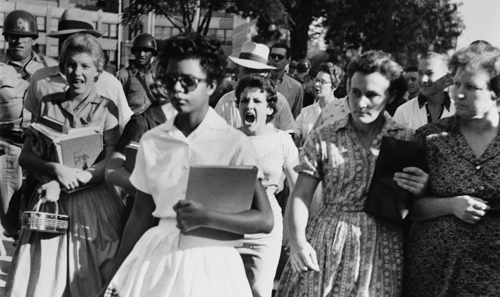
Gov. Orval Faubus holding up newspaper: “Guns Force Integration.” (Curiously, the paper is from manchester New Hampshire).
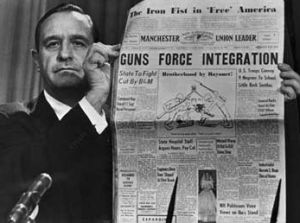
A very worthwhile trip if you ever make it to Little Rock.
